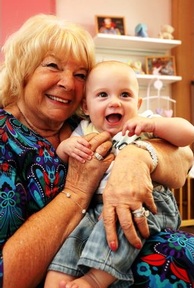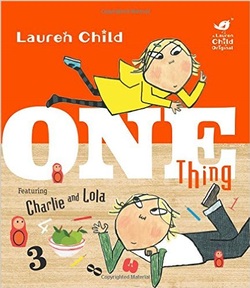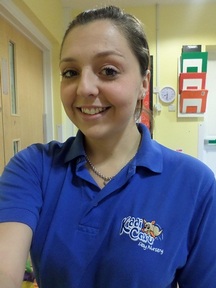'Oral storytelling is one of the most important things you can do with a child', says children's author Emma Chichester Clark
Children's picture book author, Emma Chichester Clark, best known for her books about a toy called Blue Kangaroo, is calling on nurseries not to overlook the art of storytelling.
![]() Children's fiction writer and illustrator Emma Chichester Clark
Children's fiction writer and illustrator Emma Chichester Clark
Experienced in writing children’s books like the recently published ‘Bears Don’t Read’, which provides as much a visual experience as an oral one, she says: “Oral storytelling is one of the most important things you can do with a child – and an adult! There is nothing more comforting than being read to, or simply being told a story. It is such a generous thing to do for someone, especially these days when most people have their noses glued to a small screen and you have to fight for their attention.”
According to Ms Clark, storyelling can have a huge impact on so many aspects of a child's development.
“Listening,” for example, she says, “is a skill. It is one that we take for granted and I think it’s in danger of being lost. Verbal communication is the same and the less we do it, the less confidence we have about doing it. I think sharing stories and being heard help to make us who we are. If someone will listen to us, we have confidence to speak – to tell our story, or someone else’s story. If someone is willing to listen, we gain the confidence to discriminate between a good story and a bad story, we choose one that’s worth telling – we collect and edit and develop our taste.
“Another part of the fun of oral storytelling is the way the story changes as it gets passed along and we end up with many versions.”

‘Bears Don’t Read’
Ms Clark’s latest work, ‘Bears Don’t Read’ is the tale of a bear named George who, when finding a book on the forest floor, is inspired to seek out someone who can teach him to read.
Driven by curiosity, George’s story mirrors that of a young child discovering their love of reading, which comes hand in hand with a spirit of adventure. Wondering about life ‘beyond the distant hills’, he wants to learn more about the world and not just ‘do the usual bear things anymore’.
Ms Clark came up with the idea of ‘Bears Don’t Read’ from a desire to do ‘something honest’ and ‘from the heart’, after working on a ‘very commercial project’.
She recalls, “Before I had the idea for George’s story I had been having a lot of “Is this it? Is this all there is?” moments, just as George does at the beginning of the book. I had been working on a very commercial project with an editor and we had been ruthlessly trying to tick all the boxes to make an attractive ‘product’.”
Longing to do something quite different, her creative spirit was stirred, “I kept hearing George’s voice in my head and when I began to draw him he appeared on the page, first time, just exactly as he is in the book, as if he’d been waiting in the wings.”
Children’s reaction

Asked how children have reacted to ‘Bears Don’t Read’, Ms Clark says, “Most children seem to like George, perhaps because he is so large and yet still gets picked on. They are drawn in when George arrives at the town and everyone runs away.”
On her experience of sharing the story with children, she says: “The landscape has become more familiar – with the shops and the school – and then there is a pantomime moment on the next page when sometimes a child will say, ‘Look behind you!’ as George peers over the desk. When I turn to the following page, everyone goes very quiet!
“Perhaps it is just slightly frightening, partly because of the jagged frame to the picture and partly because the Officer in Charge is shouting at George. There is palpable relief when the little girl, Clementine, appears and shows absolutely no regard for the absurd policeman.
“But then the reaction to the Officer in Charge changes again at the end of the book when all has come right for George. The children are glad to see the officer is joining in – he has a soft human side after all. Doesn’t everyone? This is what we all hope!”
Words and pictures
To an adult’s eyes and sentiment, children’s books can appear simple but, in truth, writing for children is a subtle art that very few master and children’s fiction writers find it even more difficult than adult fiction writers to find a publisher.
Ms Clark comments on the challenge of balancing words and pictures side-by side, as equal players in a story’s telling and presentation.

“Being an illustrator I always think I can make people connect with images as much as with words! I think I can say how George is feeling in a drawing of his face and his large expressive eyes – ten times more effectively than I can with words. A photograph of an unhappy dog has more chance of breaking my heart than a description in words because it’s instant. It gets to me first – rather like music in films. Before you have a chance to realise it or even to understand what is happening in the plot – the music has set your mood and prepared you for what you are going to see.
“My ideal is to make the words and pictures work equally. I don’t want them to overlap. I like the words to be doing one part of the work and the pictures to do another. Generally they are saying the same thing in a different way. But it’s even more fun when they are doing different jobs entirely.”
Professional insight
Children’s fiction writers have many aspects of presentation to consider when deciding how a story should be told.
Ms Clark says, “There are all kinds of unwritten rules about subject matter, unfortunately. These are invented by the publisher who has to imagine what another publisher (American, French, German…) might want. It’s thought that the Americans (think of the vast area of middle America) are very squeamish about a great many subjects. This means that if you draw a child on a seesaw or a swing, for example, you must put guardrails around them. They must never look as though they are doing anything dangerous in case it encourages another child to do the same thing. This applies to the text as well as pictures.”

She continues: “There is a list of suitable subject matter for picture books that I was once given. It included birthdays, Christmas, counting, alphabet, bedtime, mealtimes, going to school and so on. It was suggested that I took one of these themes and attached it to a ‘lovable character’. Then there needed to be a mini-adventure unfolding and it must have a small lesson, moral or otherwise, within it! I think that’s how it went, but I think the best and most successful books mostly ignore all those ‘rules’.”
Here again, however, Ms Clark looks to balance perceived rules with one’s own creative freedom.
“I suppose there are plenty of technical aspects to think of, such as the length of the story and the words that you choose. I like the idea of slipping in the odd unusual or difficult word. William Steig, who wrote Shrek, peppered his texts with unique and quirky words that enhanced the magical flavour of his books. I think you have to be careful not to think too much about the capabilities of the reader – over-considered texts can be dull and plodding. I want a child to have to run along on tiptoes, arms outstretched, with the wind behind them, challenging himself to catch the leaves he had thought out of reach.”
'Bear's Don't Read' is her twelfth illustrated book. Other works by Emma Chichester Clark include ‘I love you, Blue Kangaroo!’, ‘Up In Heaven’ and ‘Will and Squill’.
‘Bears Don’t Read’ is published by Harper Collins Children’s Books: ISBN 9780007425181
Latest Profiles News
 03-Oct-17
Nursery founder reveals secrets to an 'outstanding' childcare career
03-Oct-17
Nursery founder reveals secrets to an 'outstanding' childcare career
 09-Feb-17
Children's writer and illustrator Raymond Briggs wins lifetime achievement award
09-Feb-17
Children's writer and illustrator Raymond Briggs wins lifetime achievement award
 16-Oct-15
Charlie and Lola author reveals why she chose a Montessori nursery for her daughter
16-Oct-15
Charlie and Lola author reveals why she chose a Montessori nursery for her daughter
 04-Feb-15
'Oral storytelling is one of the most important things you can do with a child', says children's author Emma Chichester Clark
04-Feb-15
'Oral storytelling is one of the most important things you can do with a child', says children's author Emma Chichester Clark
 16-Dec-14
Profile: 'We have never turned away a child with special educational needs,' says Kiddi Caru SENCO
16-Dec-14
Profile: 'We have never turned away a child with special educational needs,' says Kiddi Caru SENCO